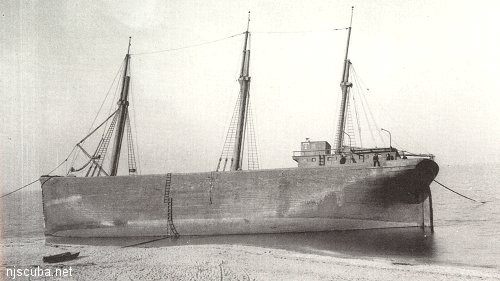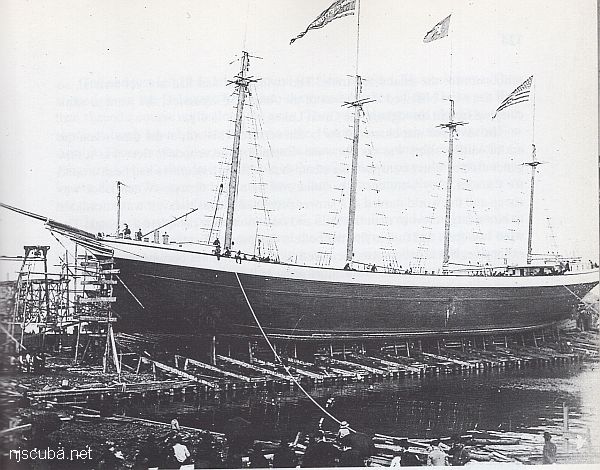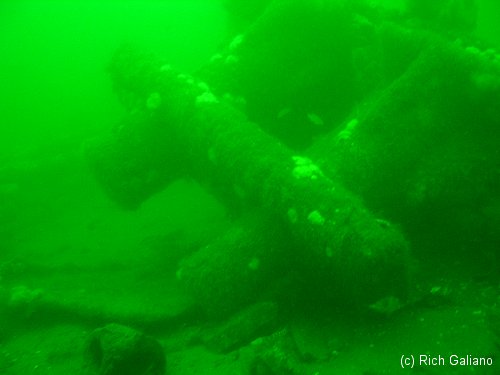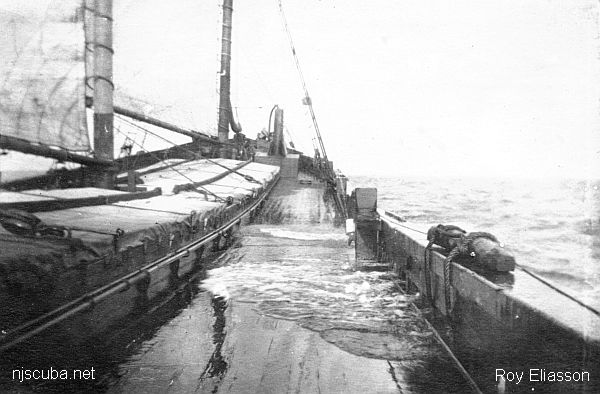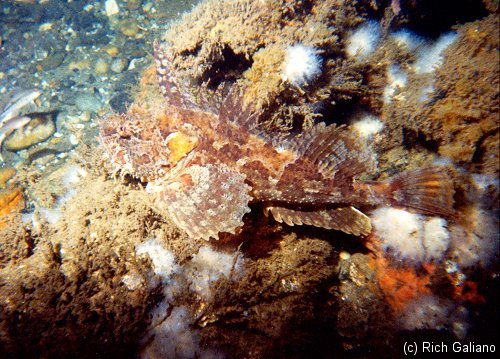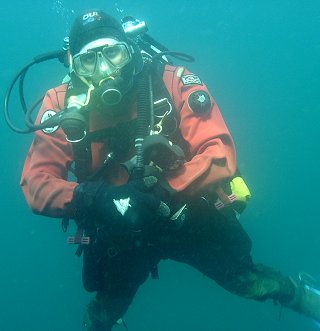- Type:
- schooner barge & tugboat ?
- Depth:
- 85 ft
This is a fascinating big wreck of a wooden schooner barge. The broken stern is upended, forming a hollow pyramid that is full of fish. The sides and keel extend north from there to the bow, from which extends a chain which reaches to another much smaller wreck, which is known as the "Inshore Tug."
More: Inshore Barge/Tug ...

